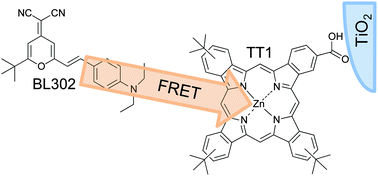Highly soluble energy relay dyes for dye-sensitized solar cells†
Abstract
High solubility is a requirement for energy relay

* Corresponding authors
a Department of Applied Physics, Stanford University, McCullough Building, 476 Lomita Mall, Stanford, CA, USA
b
Department of Materials Science and Engineering, Stanford University, McCullough Building, 476 Lomita Mall, Stanford, CA, USA
E-mail:
mmcgehee@stanford.edu
c The Molecular Foundry, Lawrence Berkeley National Laboratory, 67 Cyclotron Road, Berkeley, CA, USA
d
Laboratory of Photonics and Interfaces, École Polytechnique Fédérale de Lausanne, 1015 Lausanne, Switzerland
E-mail:
michael.graetzel@epfl.ch
e
Department of Chemistry and Center for NanoScience (CeNS), Ludwig-Maximilians-Universität München, Butenandtstr. 5–13 (E), Gerhard-Ertl-Building, München, Germany
E-mail:
bein@lmu.de
f
Department of Chemistry and Geochemistry, Colorado School of Mines, Coolbaugh Hall, 1012 14th Street, Golden, CO 80401, USA
E-mail:
aselli@mines.edu
High solubility is a requirement for energy relay

 Please wait while we load your content...
Something went wrong. Try again?
Please wait while we load your content...
Something went wrong. Try again?
G. Y. Margulis, B. Lim, B. E. Hardin, E. L. Unger, J. Yum, J. M. Feckl, D. Fattakhova-Rohlfing, T. Bein, M. Grätzel, A. Sellinger and M. D. McGehee, Phys. Chem. Chem. Phys., 2013, 15, 11306 DOI: 10.1039/C3CP51018B
To request permission to reproduce material from this article, please go to the Copyright Clearance Center request page.
If you are an author contributing to an RSC publication, you do not need to request permission provided correct acknowledgement is given.
If you are the author of this article, you do not need to request permission to reproduce figures and diagrams provided correct acknowledgement is given. If you want to reproduce the whole article in a third-party publication (excluding your thesis/dissertation for which permission is not required) please go to the Copyright Clearance Center request page.
Read more about how to correctly acknowledge RSC content.
 Fetching data from CrossRef.
Fetching data from CrossRef.
This may take some time to load.
Loading related content
